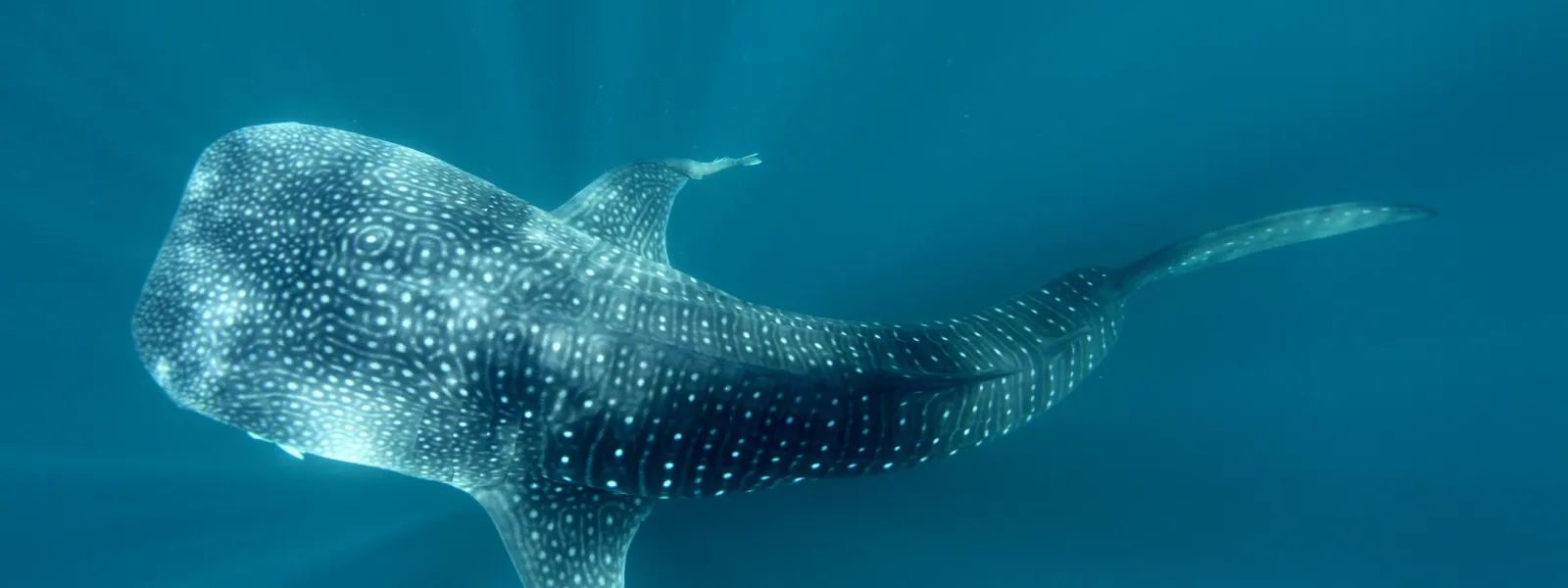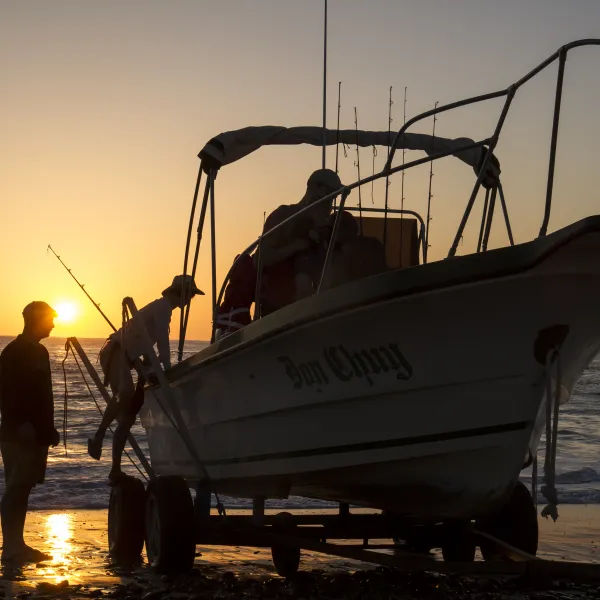
Project
Photo: Carlos AguileraProtecting the rich marine life of Cabo Pulmo Reef
Cabo Pulmo Reef, a 20,000-year-old ecological treasure in Baja California Sur, Mexico, hosts many of the 800 marine species in the Sea of Cortez.
Overfishing almost killed it in the 1980s. But the Mexican government intervened in 1995 to declare it a national park. Since then, the reef has grown, and the surrounding ecosystem has prospered.
Developers repeatedly try to build enormous tourist resorts at Cabo Pulmo. The proposed resorts typically include tens of thousands of hotel rooms, golf courses, an airport, sports clubs, and more—and require new housing development for thousands of employees.
Coral reefs like Cabo Pulmo are extremely vulnerable to the impacts of such poorly planned development. Sewage and wastewater runoff cause a surge in the growth of algae that blocks sunlight, causing the reef to bleach and die.
Fertilizers, herbicides, and pesticides from golf courses contaminate ocean currents and upset the delicate ecological balance of the area. Boating, fishing, and diving stress and break reefs, too.
In an area where water is scarce, tourism infrastructure projects could overexploit aquifers that are already suffering the impacts of climate change.
AIDA's work has been instrumental in ensuring the survival and health of Cabo Pulmo's ecosystems. We continue monitoring the situation and working with national partners to make legal protections for the reef stronger and permanent.
Partners:

Related projects
Latest News
Working to protect coral reefs in Mexico and throughout Latin America
In the Gulf of Mexico, 27 coral reefs form a submarine mountain range that runs between six islands in an area stretching for miles. Hundreds of colorful fish species, sea urchins, starfish, and sea grasses share the reef with an abundance of other life forms. This is the magnificent Veracruz Reef, the largest coral ecosystem in the Gulf. Unfortunately, planned expansion of the Port of Veracruz, recently approved by the Mexican government, will damage the reef and harm the creatures that depend on it for survival. The project will also harm the nearby Los Tuxtlas Biosphere Reserve, a jewel of Mexico’s Emerald Coast, because developers will mine it for rock to use in port construction. The environmental authority approved the port development in 2013, even though Mexico declared the Veracruz Reef System a National Protected Area in 1992. What’s more, Mexico is a party to the Ramsar Convention, an international treaty for the protection of wetlands of international importance—which includes the Veracruz Reef. Despite the reef’s recognized significance, the government has officially reduced the size of the protected area to make way for the larger port. "Now is a good time to call the attention of world leaders and diplomats to Mexico’s unsustainable actions," said AIDA legal advisor Sandra Moguel. Mexico is preparing to host the December 2016 Conference of Parties to the Convention on Biological Diversity, an international treaty to sustain the rich diversity of life on Earth. AIDA and the Mexican Center for Environmental Law (CEMDA), representing 13 organizations and individuals, have sent a letter (in Spanish) to the Secretariat of the Convention on Biological Diversity. (The Secretariat is a neutral organization staffed by international civil servants, accountable to the Conference of Parties and its subsidiary bodies, and linked to the United Nations Environment Program.) The letter requests two things of the Secretariat: assess the harms that the expansion will cause, and ask Mexico to revoke project authorization because of the serious impact it will have on the diversity of life on the reef. "The manner in which the government has authorized this development project worries us," Moguel said. "Mexico has breached their international commitment to protect the rich biodiversity within its borders, particularly when it falls within natural protected areas." AIDA’s marine team has been working on similar cases in Mexico and throughout the region, gaining expertise in national and international laws that enable the protection of coral reefs. They have produced a report that synthesizes knowledge gained through years of such work, The Protection of Coral Reefs in Mexico: Rescuing Biodiversity and its Benefits to Mankind (in Spanish). "We want to interest and inform people working in wetlands protection," Moguel said. "There is a diverse array of legal tools at their disposal, which they may not be aware of," Moguel said. "In addition to describing our own legal work on this issue, we discuss the power of international treaties and commitments that nations must abide by." The report outlines the importance of coral reefs in the world—in Mexico in particular—explores case studies, outlines relevant international treaties and obligations, and looks to best practices from nations around the region for inspiration. AIDA Marine Senior Attorney Gladys Martínez said that reports such as these are intended to raise awareness of the legal means available to protect wetlands and to highlight the different methods that decision-makers can use. "AIDA selects emblematic cases like these of Mexico, to illustrate environmental problems that recur throughout the hemisphere," said Gladys Martínez. "The threats to the Veracruz Reef System are a sign of the urgent need for nations to take effective measures to protect coral reefs and comply with their international obligations." AIDA has launched a campaign to fund the marine program’s continued efforts to protect corals in the region. Our work will provide advocates and decision-makers with the practical resources, recommendations, and tools needed to improve coral reef protection. Your donation will directly support this work, and provide a brighter future for the brilliant array of life on the coral reefs of Latin America.
Read moreOur fight to protect the coral reefs and mangroves of Mexico goes beyond national borders
Coral reefs, the nurseries of the seas, are vital to the fisheries that provide food for millions of people. Mangrove forests also benefit people: they protect coastal communities from increasingly severe storm surges and help to mitigate climate change by absorbing huge amounts of carbon dioxide. But large infrastructure projects that ignore these benefits threaten some of these vitally important ecosystems. AIDA uses the law to protect coral reefs, mangroves and other wetlands. We have found that it’s not enough to fight at the local level, country by country. AIDA approaches defense at the ecosystem level, which is more effective. We engage in discussions with international authorities, bringing attention to the obligations that countries have to the world to preserve their marine and coastal environments. "What you get with these international legal actions is a strategy that weaves together various aspects of the case: legal, political, scientific and media. So we make the issue relevant not only to local decision makers, but also to international authorities. Public support is generated and consulting or certified experts speak out about it, "said Sandra Moguel, AIDA legal advisor. A prime example of this strategy for environmental protection is a case involving Mexico, a country rich in wetlands. In May AIDA alerted the Secretariat of the Ramsar Convention, an intergovernmental treaty for the protection of wetlands, about the possible breach of Mexico’s international obligations. Mexico’s government is considering approval of the proposed Las Cruces Dam, a hydroelectric project in Nayarit, a state in the country’s northwest. Among other damage, the project would alter the course of the San Pedro Mezquital River, which feeds Marismas Nacionales (National Wetlands), one of the most extensive mangrove systems in North America. National Wetlands are listed as wetlands of international importance under the Ramsar Convention. In 2010, diplomats from the Ramsar Convention recommended that the Mexican government advocate sustainable use of the wetland while assessing the project’s feasibility. We have alerted the Ramsar Secretariat that their recommendations would be ignored if Mexico gives a green light to a project that would irreversibly damage National Wetlands, biodiversity, and the communities that depend on that environment. By drawing the attention of international bodies, AIDA strengthens the efforts of our local partner organizations. AIDA has also employed this strategy to protect the unique Cabo Pulmo coral reef, in Baja California Sur. Since 2012, we have continually reminded the Mexican authorities that both the Ramsar Secretariat and the Unesco World Heritage Committee have asked them to consider the cumulative and indirect impacts of tourism projects proposed near the reef. Our arguments were added to those presented by our partners in Mexico to prevent authorization of Cabo Dorado, a mega-resort that would involve building a new city near the reef. This project is the third that tourism developers have attempted to build next to Cabo Pulmo. Construction would surely be fatal to the reef. In a victory that extends beyond Mexican borders, the government decided on May 29 to deny the environmental permit for Cabo Dorado. With your help, we will continue to bring the voice of local communities to international forums. We will continue to add value and support their struggle to preserve marine and coastal environments that benefit us all. Thanks!
Read moreCoral reefs in Latin America: A natural spectacle at risk
Gladys Martínez de Lemos, legal advisor, AIDA Twenty five percent of all marine species have lived at some stage in coral reefs. In Costa Rica, these reefs are under threat from deforestation and other human activities. Coral reefs help maintain balance in the marine environment. They are home to many marine species for human consumption, they protect coasts from erosion and hurricanes, and they offer coastal communities a source of income from diving tourism. But a lack of clear policies and regulations is threatening their survival. These natural wonders help balance the ecosystem by providing a source of food to superior organisms, thus forming vital food webs. Their environmental value is so significant that economists have estimated that a hectare of reef is worth over one million dollars per year. Even though coral reefs cover about a tenth of the ocean floor, current estimates suggest that 25% of all marine species have lived in coral reefs at some stage of their life cycle. Despite this, coral reefs are under threat in Costa Rica and elsewhere from ocean acidification, destructive fishing practices, unsustainable coastal development, and pollution, among other factors. According to the Costa Rica's 15th State of the Nation Report, the loss of 75% of live corals in the Cahuita Reef is mostly due to sedimentation caused by basin deforestation and other human actions. Governmental inaction It's evident that coral reefs are endangered. There are no clear and widespread policies and regulations to deal with this issue; there are no mechanisms for the control, monitoring or even protection to preserve coral reefs. Even current international obligations on coral reef protection are overlooked. This can no longer be. Marine biodiversity and ecosystems must be preserved for future generations to see the beauty and diversity of coral reefs. We all have a son, nephew or cousin who we want to have the opportunity to enjoy the richness of the coral reefs, or the chance to savor fish and their valuable protein. Most Latin American countries and their decision makers have not yet created special laws to protect the coral reefs. They face a huge challenge -- and responsibility -- to protect the reefs.
Read more